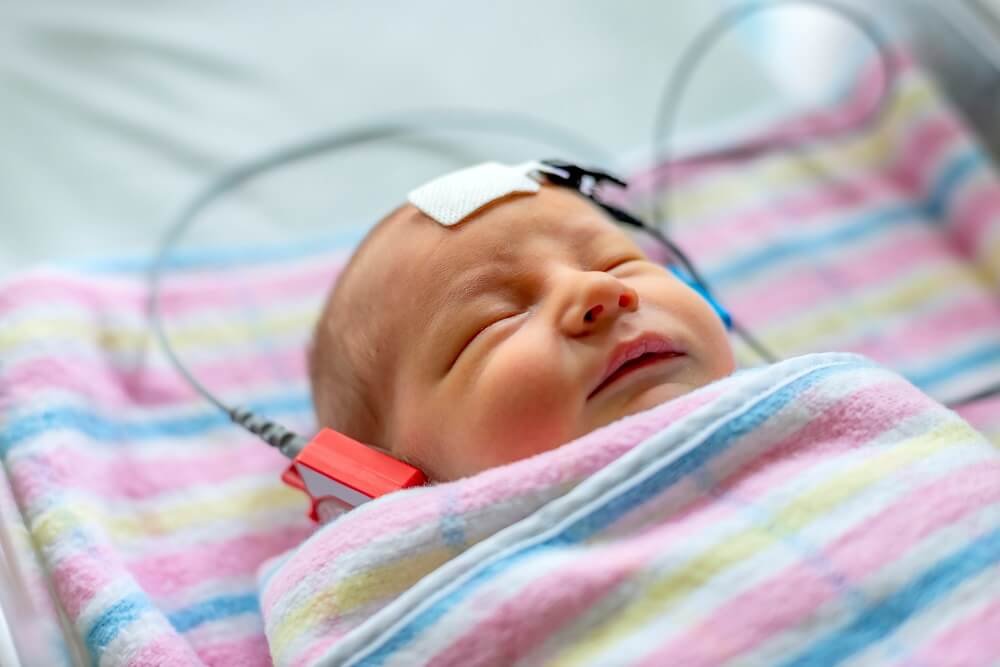Auditory Neuropathy Spectrum Disorder:
Its Impact on Listening to Spoken Language Learning
A detailed guide for parents, caregivers, and listening and spoken language (LSL) professionals, covering the essentials of auditory neuropathy spectrum disorder (ANSD). This resource explains what ANSD is, the signs children with this disorder may exhibit, how it is diagnosed, and strategies to mitigate the challenges children with ANSD may face when learning LSL.
Table of Contents
What is Auditory Neuropathy Spectrum Disorder?
Auditory neuropathy spectrum disorder (ANSD) is a hearing disorder where the inner ear successfully detects sound, but the signal is not properly transmitted to the brain. The main issue lies in the dysfunction of the auditory nerve, which carries signals from the inner ear to the brain. This condition can affect people of all ages, from infants to adults.
In ANSD, the outer hair cells in the cochlea (the part of the inner ear responsible for converting sound waves into electrical signals) function normally, but there is a problem with the transmission of these signals to the brain. This can result in a range of hearing difficulties, from mild to severe. People with ANSD may have trouble understanding speech, especially in noisy environments, and may experience fluctuating hearing levels.
Photo credit: Hear4U, What is Auditory Neuropathy Spectrum Disorder (ANSD)?
What Causes ANSD?
ANSD can be caused by a variety of factors that affect the transmission of sound signals from the inner ear to the brain. These causes can be broadly categorized into genetic and non-genetic factors.
Genetic Factors
Inherited Conditions: Certain syndromes have been associated with ANSD. Syndromes include:
Mutations: Specific gene mutations, such as those in the OTOF gene, can cause ANSD. These mutations affect the proteins involved in the transmission of auditory signals to the brain.
Non-Genetic Factors
Prematurity and Birth Complications: Babies born prematurely or those who experienced complications during birth, such as hypoxia (lack of oxygen), are at a higher risk of developing ANSD.
Jaundice: High levels of bilirubin in newborns can damage the auditory nerve and lead to ANSD.
Infections: Certain infections, such as meningitis or cytomegalovirus (CMV), can affect the auditory nerve and cause ANSD.
Toxic Exposure: Exposure to certain toxins or medications that are ototoxic (harmful to the ear) can damage the auditory nerve.
Trauma: Head injuries or other forms of trauma that affect the auditory nerve can result in ANSD.
Neurological Disorders: Conditions that affect the nervous system, such as multiple sclerosis, can also lead to ANSD.
What Signs of ANSD might a Child Show?
-
A child might show an inconsistent response to sounds, such as reacting to their name at times and not at others, which suggests fluctuating hearing levels.
-
A child might struggle to comprehend speech, particularly in loud settings such as playgrounds or classrooms. You might observe them often, asking people to repeat what they said or to clarify their words.
-
A child might struggle to understand spoken instructions, which could be mistaken for a behavioral problem.
-
A child may become frustrated or appear to withdraw in social situations. You may notice that they even go as far as avoiding social situations. This can be a result of their communication challenge.
-
Did you call a child’s name, and they looked in the other direction? ANSD can cause trouble determining the direction or source of a sound.
-
A child has been diagnosed with hearing loss and provided with hearing aids. However, you've noticed that the benefits from these aids are inconsistent, and the child may even be showing a strong dislike for them.
-
A child demonstrates a dependence on visual cues, such as watching people's faces closely for facial expressions and lip-reading during conversations. This is a sign that suggests they are compensating for difficulties in hearing and processing auditory information.
How is ANSD Diagnosed?
Due to the fluctuating nature of ANSD it is difficult to diagnose through one test. It is typically diagnosed through a series of hearing tests and evaluations conducted by audiologists. The series of diagnostic tests may include:
Hearing Tests: Initial tests, such as pure-tone and speech audiometry, may show fluctuating or inconsistent hearing levels, which can be a sign of ANSD.
Auditory Brainstem Response (ABR) test measures the brain's response to sounds. In individuals with ANSD, the ABR results may be absent or abnormal, indicating a problem with the auditory nerve.
Otoacoustic Emissions (OAE) test checks the function of the cochlear hair cells. In cases of ANSD, OAEs are often present, indicating normal hair cell function, despite the hearing difficulties.
Auditory Steady-State Response (ASSR) Test: This test can help confirm the presence of hearing loss and provide more information about its severity.
Medical Evaluation: An audiologist perform a thorough medical evaluation by asking questions to establish a detailed case history. This may be conducted to rule out other potential causes of hearing loss and to identify any underlying conditions associated with ANSD.
By combining the results from these assessments, ANSD can be correctly diagnosed and an individualized intervention plan can be established.
(De Siati et al., 2020, Inverso, 2021, Santos et al., 2023)
A flowchart adapted from the British Society of Audiology's guidelines for diagnosing ANSD. This chart visually illustrates the testing process and how a diagnosis of ANSD is determined.
Terms to assist in understanding this chart:
AC: Air Conduction
BC: Bone Conduction
Hz: Hertz
CE - Chirp: A family of short acoustic stimuli
dBnHL: Decibel normal hearing level
WB: Wideband
SNHL: Sensorineural hearing loss
(Bennett 2021)
Key Indicators of ANSD:
Presence of otoacoustic emissions (OAEs)
Presence of cochlear microphonic (CM)
Absent or abnormal neural waves in auditory brainstem response (ABR).
How Does ANSD Affect LSL Learning?
A child’s spoken language development can be significantly impacted by ANSD. It affects their ability to perceive and process speech sounds due to disrupted transmission of sound from the inner ear to the brain. This leads to difficulties in understanding speech.
The variability in auditory performance among children with ANSD influences their speech perception and, subsequently, their ability in an LSL learning environment. While hearing aids and CI can help develop these skills, their effectiveness varies based on the individual case and the degree of neural synchrony achieved (Santos et al., 2023).
Photo credit: Central Institute for the Deaf
One family’s journey with ANSD and LSL. Full article on Hearing First
Effective Early Intervention Strategies for Children with ANSD in LSL Classrooms
The most effective early intervention (EI) strategies for ANSD incorporate a multidisciplinary approach. According to Santos et al. (2023), intervention strategies must include both bottom-up and top-down procedures. Bottom-up strategies focus on restoring auditory access through hearing aids or cochlear implants. Cochlear implants are particularly recommended for profound hearing loss, especially in cases of inner hair cell presynaptic disorders (De Siati et al., 2020) or when conventional hearing aids fail to provide sufficient benefit. Top-down strategies involve specialized hearing and speech training to enhance speech perception and facilitate language development. Additionally, improving the signal-to-noise ratio by using FM/DM devices and visual language support proves beneficial, especially in noisy environments. Due to the varying degrees of ANSD, it is important to note that there isn’t a “one-size-fits-all” approach and what may work for one child may not work for another (Clarin, 2015). Early and precise diagnosis, followed by a tailored intervention plan, is essential for achieving the best outcomes in managing ANSD and its impacts on LSL learning.
Early Intervention Matters
Although ANSD is considered a rare form of hearing loss, it is not unique in the sense that early intervention (EI) matters. Research has consistently demonstrated that the sooner a child with any form of hearing loss receives intervention, the better opportunity they have to develop age-appropriate language skills (Voss & Stredler-Brown 2020).
Why Early Intervention Matters:
Critical Period of Development: The first few years of life are a critical period for speech and language development. EI ensures that children with ANSD receive the support they need during this crucial window.
Preventing Delays: Without EI, children with ANSD may experience significant delays in speech, language, and communication skills. These delays can have long-term effects on their academic and social development.
Optimizing Neural Plasticity: The brain is most adaptable in the early years. EI can help maximize the brain's ability to reorganize and adapt to better process auditory information.
Improving Communication Outcomes: EI can help children with ANSD develop effective communication strategies, whether that's through spoken language or other methods like sign language.
Supporting Families: Many EI programs offer support for families by providing them with knowledge and skills to support their child's communication development at home.
Early Access to Amplification and Assistive Technology: EI programs ensure that children who can benefit from hearing aids, cochlear implants, or other assistive devices receive them as soon as possible.
Research has indicated that children with ANSD show similar progress in speech, language, and social-emotional development as children with hearing loss not related to ANSD, given timely and appropriate intervention (Ramanathan et al., 2023).
About the Author
Jasmine Fletcher is currently a grant scholar pursuing a Master's degree in Deaf Education at Fontbonne University. For a learning project, Jasmine explored auditory neuropathy spectrum disorder and its effects on the ability to listen and learn spoken language, utilizing a range of resources. The compiled blog showcases her learning journey.
Resources
References
Clarin, G. P. (2015). Auditory Neuropathy Spectrum Disorder. In A Resource Guide for Early Hearing Detection & Intervention. https://www.infanthearing.org/ehdi-ebook/2015_ebook/8-chapter8auditoryneuropathy2015.pdf
Cole, E. B., & Flexer, C. (2019). Children with Hearing Loss: Developing Listening and Talking, Birth to Six. Plural Publishing.
De Siati, R. D., Rosenzweig, F., Gersdorff, G., Gregoire, A., Rombaux, P., & Deggouj, N. (2020). Auditory Neuropathy Spectrum Disorders: From diagnosis to Treatment: Literature review and case reports. Journal of Clinical Medicine, 9(4), 1074. https://doi.org/10.3390/jcm9041074
Dettman, S. J., Dowell, R. C., Choo, D., Arnott, W., Abrahams, Y., Davis, A., Dornan, D., Leigh, J., Constantinescu, G., Cowan, R., & Briggs, R. J. (2016). Long-term communication outcomes for children receiving cochlear implants younger than 12 months. Otology & Neurotology, 37(2), e82–e95. https://doi.org/10.1097/mao.0000000000000915
Fernandes, N. F., Morettin, M., Yamaguti, E. H., Costa, O. A., & Bevilacqua, M. C. (2014). Performance of hearing skills in children with auditory neuropathy spectrum disorder using cochlear implant: a systematic review. Brazilian Journal of Otorhinolaryngology, 81(1), 85–96. https://doi.org/10.1016/j.bjorl.2014.10.003
Fernandes, N. F., Yamaguti, E. H., Morettin, M., & Costa, O. A. (2015). Speech Perception in Users of Hearing Aid with Auditory Neuropathy Spectrum Disorder. CoDAS, 28(1). https://doi.org/10.1590/2317-1782/20162014157
Inverso, D. (2025). Auditory Neuropathy Spectrum Disorder (ANSD) (for parents). Kids Health. https://kidshealth.org/en/parents/ansd.html
Moeller, M. P. (2000). Early intervention and language development in children who are deaf and hard of hearing. PEDIATRICS, 106(3), e43. https://doi.org/10.1542/peds.106.3.e43
Ramanathan, D., Mahomva, C., & Goldberg, D. (2023). Speech and Language outcomes in Auditory Neuropathy Spectrum Disorder (ANSD) children managed with amplification. American Journal of Orolaryngology. https://www.sciencedirect.com/science/article/abs/pii/S0196070922003805?via%3Dihub
Santos, F. R. D., Fernandes, J. S. Z., & Delgado-Pinheiro, E. M. C. (2023). Speech perception and spoken language of children with auditory neuropathy spectrum disorder: a systematic literature review. Revista CEFAC, 25(3). https://doi.org/10.1590/1982-0216/20232539522











